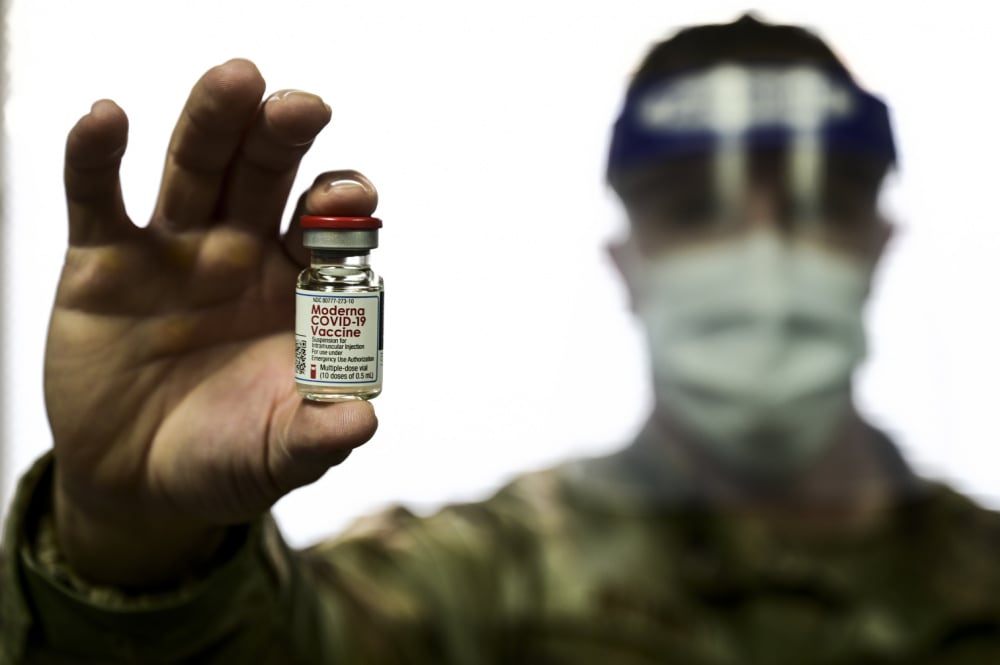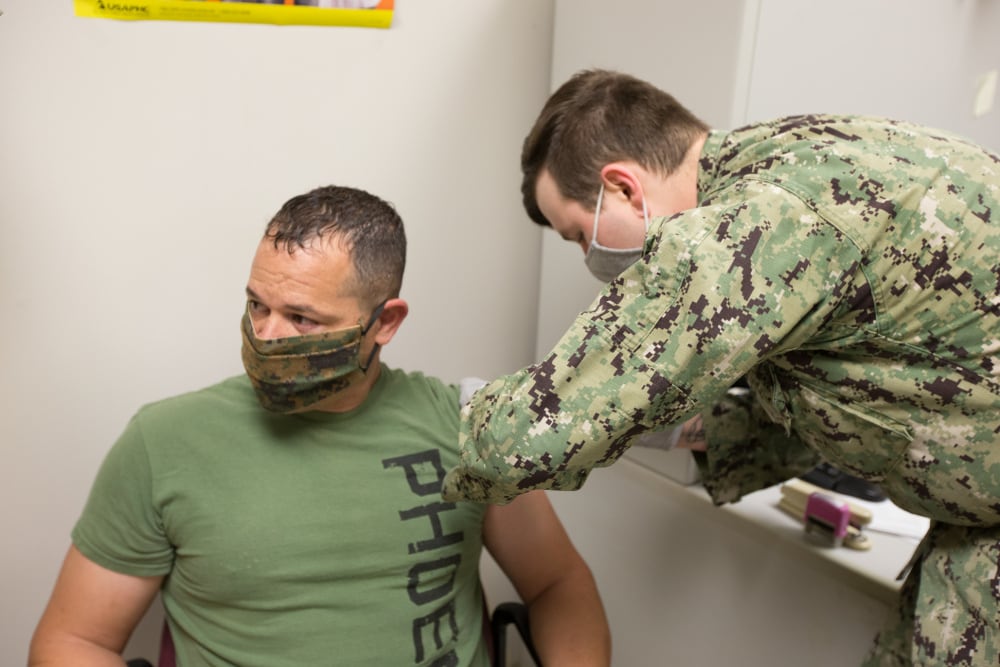More than three months after the Defense Department first started administering COVID-19 vaccines to its uniformed members and affiliated civilians, take rates appear to be rising, officials told reporters on Friday.
Installations are now checking more names off of their eligible lists, according to Lt. Gen. Ronald Place, director of the Defense Health Agency, though the department is not centrally tracking numbers of who has turned down the offer.
“As we move through those tiers, we know who accepted, who didn’t come in or didn’t try to make an appointment, that sort of thing. But when we know who’s gotten it, we circle back to those who haven’t and offer it again, on an iterative basis,” he said. “And as we offer it, many who at first declined the opportunity are now taking us up on that opportunity.”
For some, it’s taken three or four tries before they’ve volunteered for the shot, he said. So for any service member or DoD-affiliated civilian who declined to get vaccinated when they were first eligible, they can call up their command health care providers and make arrangements if they’ve changed their minds.
“Once you’ve been contacted, you’re forever eligible,” Place said.
The Pentagon can’t say how many of those offered have turned down the vaccine because that information is not being tracked at higher than a local level.
Later that month, the Joint Staff’s vice director for operations told lawmakers during a House Armed Services Committee hearing that about a third of troops did not get the vaccination. He added later he did not know why.
Since then, Pentagon spokesman John Kirby has repeatedly noted that the number provided by Maj. Gen. Jeff Taliaferro, that just two-third of troops were opting to take the vaccine when offered, was “extrapolated” from survey data showing that one-third of the U.S. population “probably” or “definitely” would not get the vaccine.
RELATED

In reality, the rejection rate in the military could be much higher. But no one really knows.
Of about 1.8 million doses given since mid-December, Place said, about 600,000 of those have gone to service members, making about 30 percent of the total force partially or fully vaccinated.
Those who have gotten inoculated so far have been by and large in the first tier, which includes health care providers, first responders, critical national security units and deployed or deploying troops.
They make up more than half of the force, Place said.
“...we’re seeing individuals who may have been initially wary about the vaccine now come forward and ask for,” he said. “I expect that trend to continue.”
This week, seven Democratic lawmakers sent a letter to President Joe Biden, imploring him to waive the federal law that that prevents experimental vaccines from being mandatory, including for service members.
“Vaccinating every eligible servicemember will improve readiness and have an immediate and positive impact on the communities in which they serve,” Rep. Jimmy Panetta, D-Calif., wrote. “Requiring DoD to obtain informed consent prior to vaccination is not only harmful to our national security, but contrary to the best interests of servicemembers, their families, communities and colleagues.”
Under the Food and Drug Administration’s emergency use authorization, the three available COVID-19 vaccines are being administered before they reach full approval. That process is expected to take roughly two more years, at which time the military could add the COVID-19 vaccine to its standard battery of inoculations.
In the mean time, leaders at every level have been publicly encouraging their troops to get vaccinated. That could include some local incentives to do so, including the Navy’s move to loosen quarantine protocols for sailors.
“So individual commanders, because they have commander responsibility, anything that’s in their legal purview for incentives, they have that opportunity to do that,” Place said. “But there’s no central incentive that’s being considered within the department right now.”
Meghann Myers is the Pentagon bureau chief at Military Times. She covers operations, policy, personnel, leadership and other issues affecting service members.





